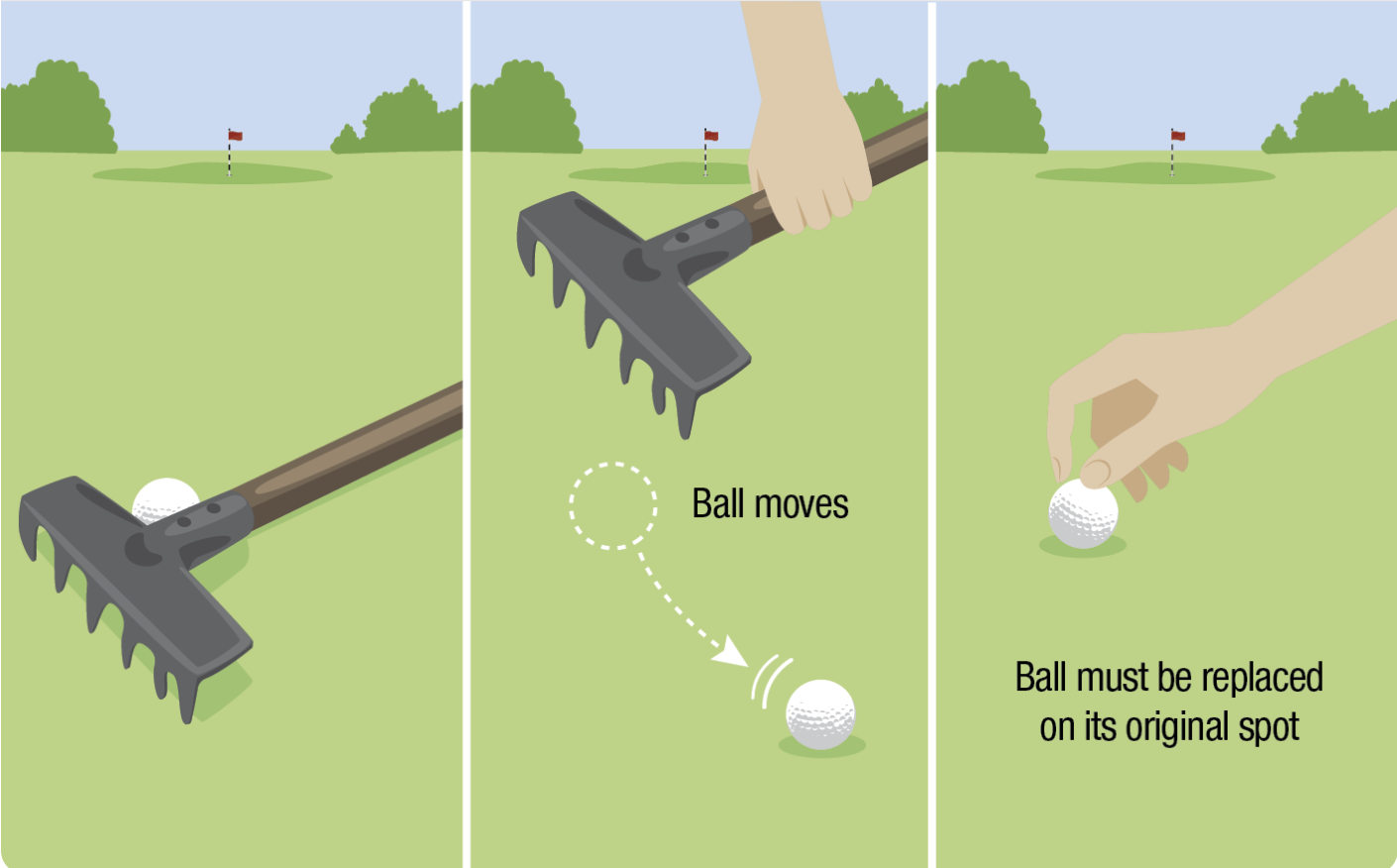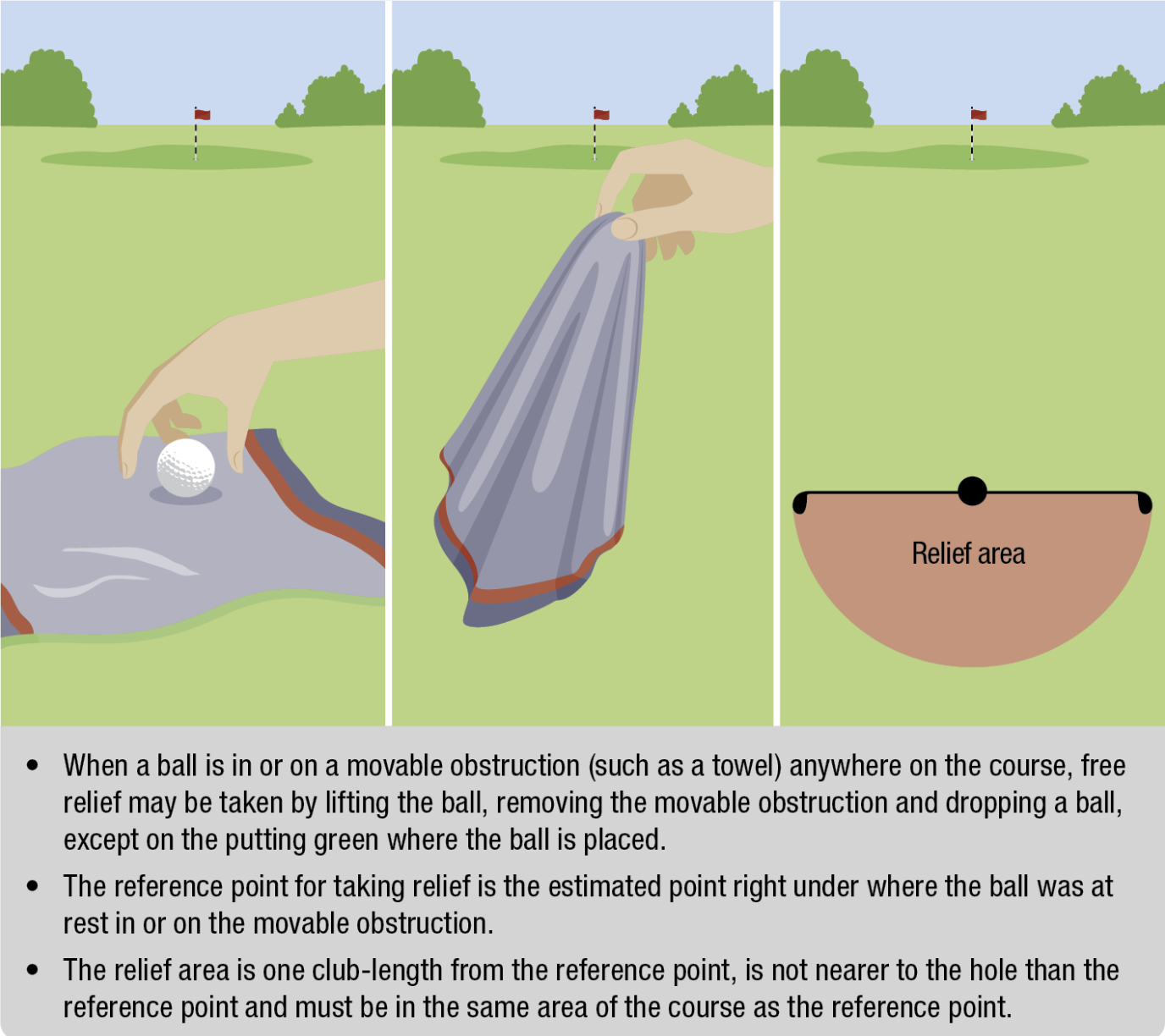Obstructions are artificial objects and therefore the Rules of Golf do not expect a player to contend with obstructions to complete a hole. While obstructions that are immovable are handled by using the nearest point of complete relief, obstructions that are movable can just be moved.
What are Movable Obstructions?
Obstructions are artificial objects so long as they are not boundary objects* or integral objects**. As long as the object may be moved without unreasonable effort or causing damage to the course or object, then it is considered a movable obstruction. Common examples are rakes, towels, beer and soda cans and trash.

*Boundary objects are artificial objects used to define the boundaries of the course, such as walls, stakes or fences and are treated as immovable even if they could be readily moved.
**Integral objects are artificial objects which the Committee has defined as part of the challenge of the course and free relief is not permitted.
When Can I Move them?

A movable obstruction may be moved anywhere on or off the course, regardless of where the ball lies. However, a movable obstruction may not be moved to deliberately affect a ball in motion and tee-markers must not be moved when playing from the teeing area.
If the ball is accidentally moved in the process of moving a movable obstruction, there is no penalty and the ball must be replaced.

If the ball comes to rest on top of a movable obstruction, the player may lift the ball, move the obstruction and drop the ball within one club-length of the spot directly under where it lay on the object (if it was on the putting green, place the ball directly on the spot). The ball must be dropped in the same area of the course as the spot directly under where the ball lay on the object.




